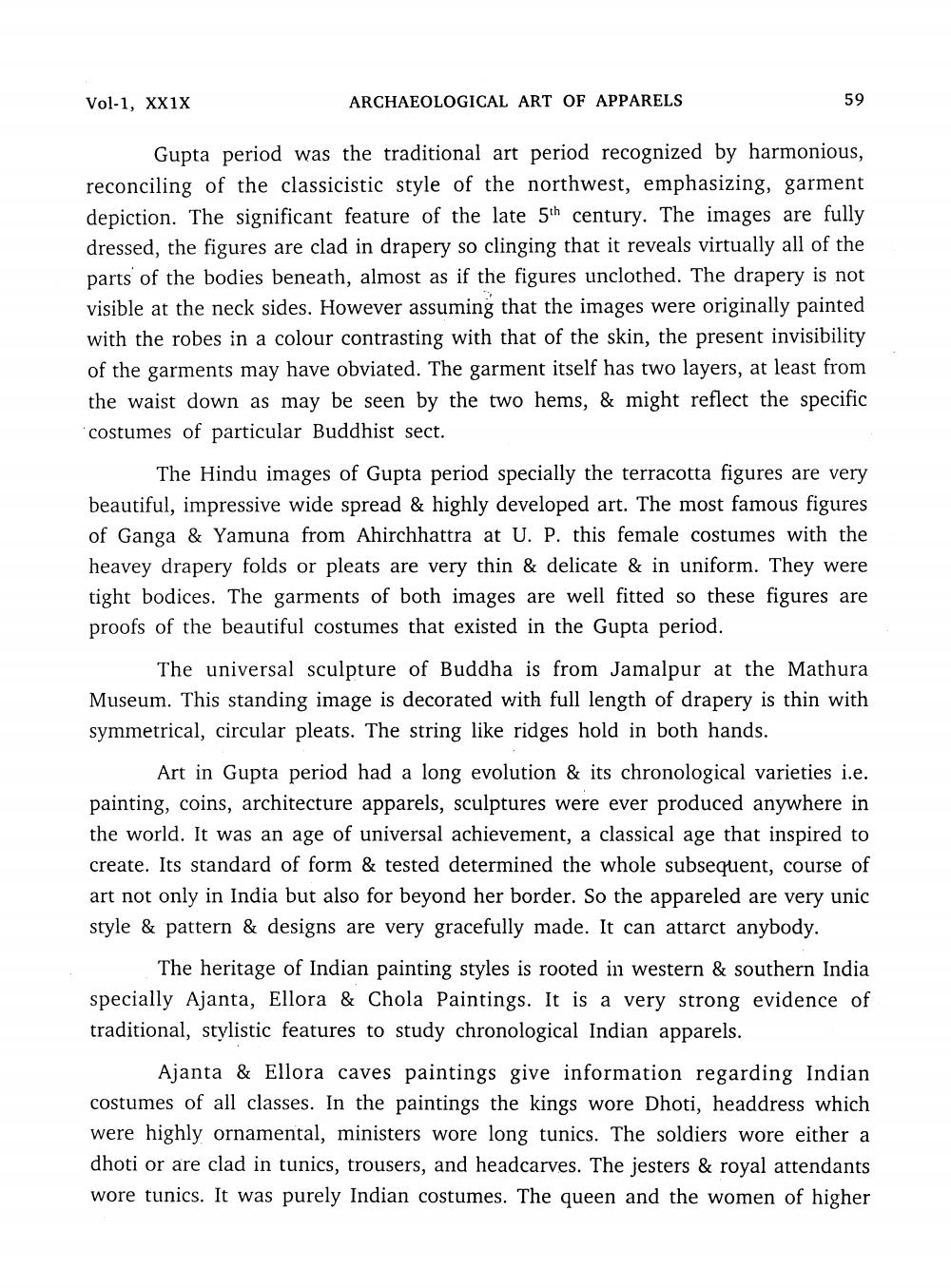________________
Vol-1, XX1X
ARCHAEOLOGICAL ART OF APPARELS
Gupta period was the traditional art period recognized by harmonious, reconciling of the classicistic style of the northwest, emphasizing, garment depiction. The significant feature of the late 5th century. The images are fully dressed, the figures are clad in drapery so clinging that it reveals virtually all of the parts of the bodies beneath, almost as if the figures unclothed. The drapery is not visible at the neck sides. However assuming that the images were originally painted with the robes in a colour contrasting with that of the skin, the present invisibility of the garments may have obviated. The garment itself has two layers, at least from the waist down as may be seen by the two hems, & might reflect the specific costumes of particular Buddhist sect.
The Hindu images of Gupta period specially the terracotta figures are very beautiful, impressive wide spread & highly developed art. The most famous figures of Ganga & Yamuna from Ahirchhattra at U. P. this female costumes with the heavey drapery folds or pleats are very thin & delicate & in uniform. They were tight bodices. The garments of both images are well fitted so these figures are proofs of the beautiful costumes that existed in the Gupta period.
The universal sculpture of Buddha is from Jamalpur at the Mathura Museum. This standing image is decorated with full length of drapery is thin with symmetrical, circular pleats. The string like ridges hold in both hands.
Art in Gupta period had a long evolution & its chronological varieties i.e. painting, coins, architecture apparels, sculptures were ever produced anywhere in the world. It was an age of universal achievement, a classical age that inspired to create. Its standard of form & tested determined the whole subsequent, course of art not only in India but also for beyond her border. So the appareled are very unic style & pattern & designs are very gracefully made. It can attarct anybody.
The heritage of Indian painting styles is rooted in western & southern India specially Ajanta, Ellora & Chola Paintings. It is a very strong evidence of traditional, stylistic features to study chronological Indian apparels.
Ajanta & Ellora caves paintings give information regarding Indian costumes of all classes. In the paintings the kings wore Dhoti, headdress which were highly ornamental, ministers wore long tunics. The soldiers wore either a dhoti or are clad in tunics, trousers, and headcarves. The jesters & royal attendants wore tunics. It was purely Indian costumes. The queen and the women of higher




